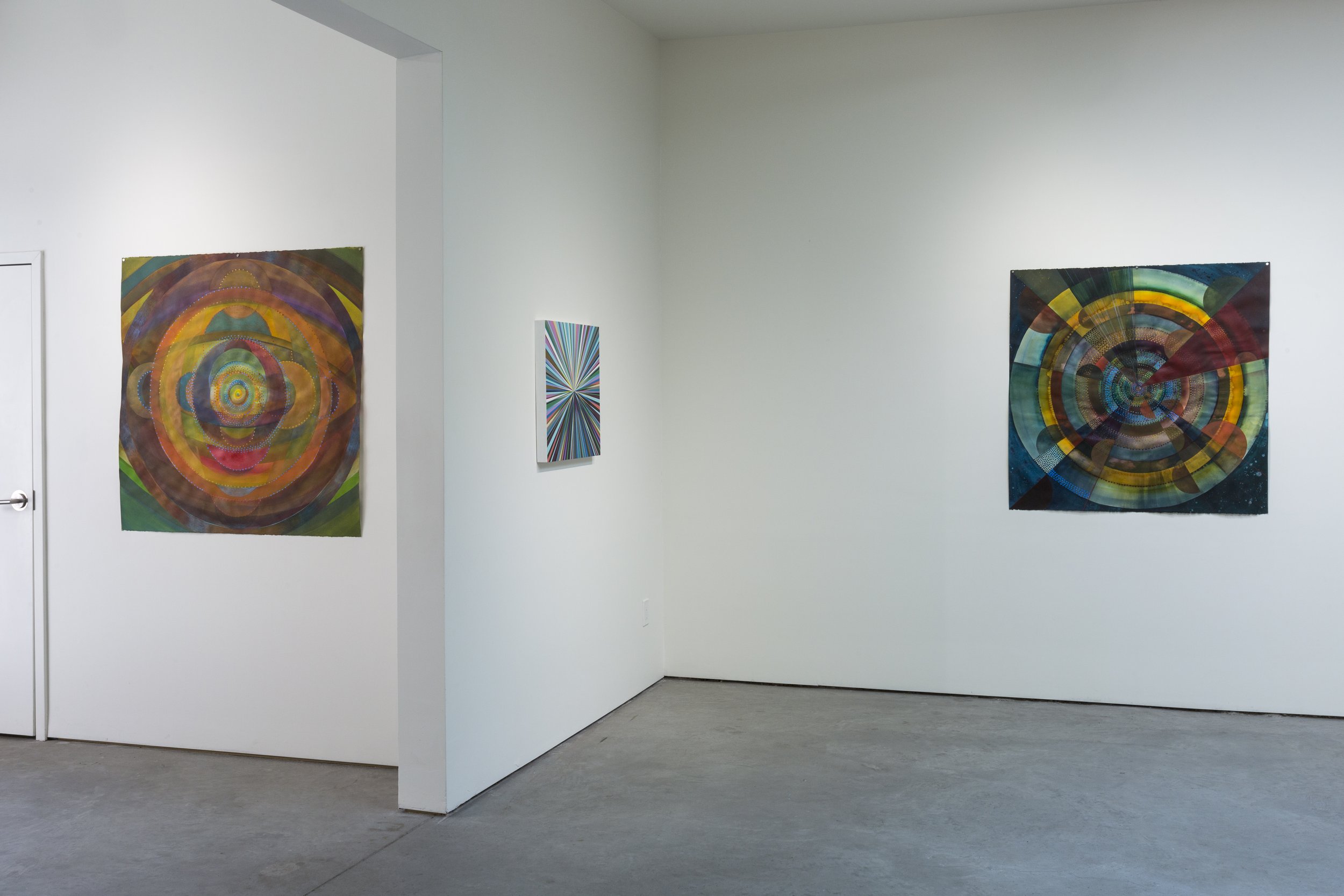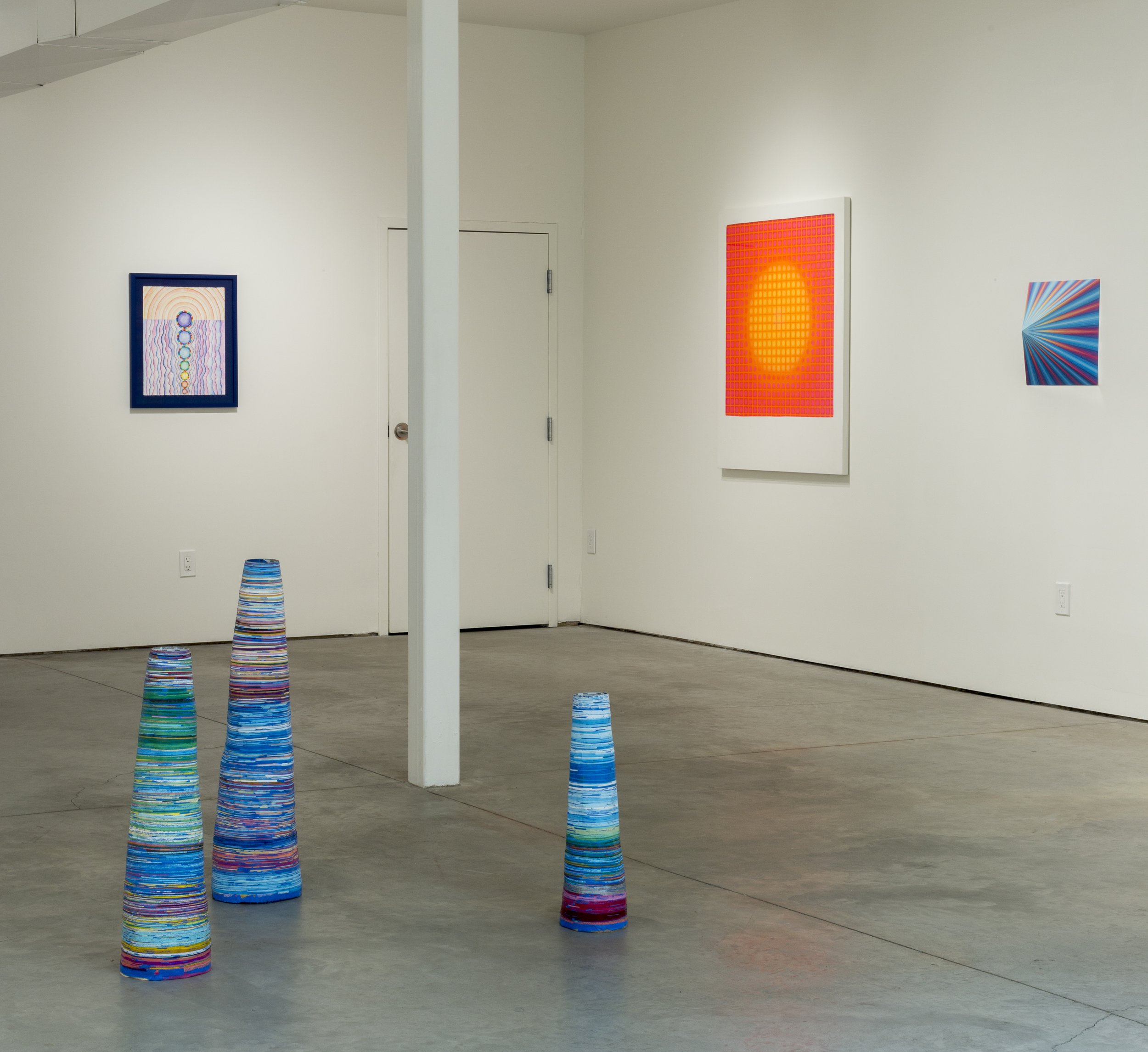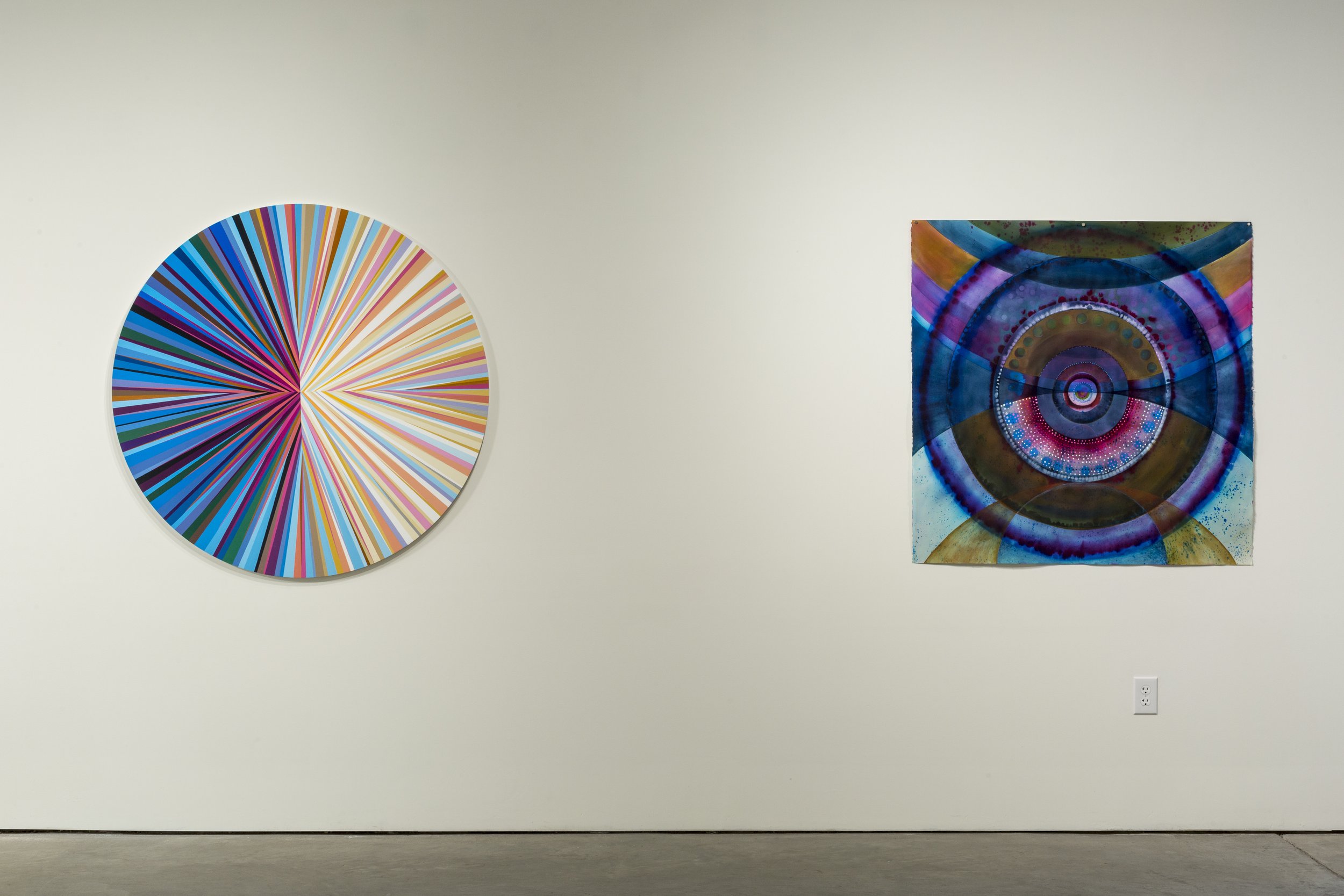Not A Certainty But A Circumstance
Letitia Quesenberry
Skylar Smith
Martin Benson
Gibbs Rounsavall
"I want people to realize that color is not a certainty, but a circumstance. Red is maybe red. It’s not the same if you hold an object under the sun as when you hold it in the shade.”
- Carlos Cruz-Diez
Quappi Projects is pleased to present Not a Certainty But a Circumstance, featuring new work by Louisville artists Skylar Smith (b.1976), Letitia Quesenberry (b.1971), and Gibbs Rounsavall (b.1975), and Louisville-born Martin Benson (b. 1986), who is now based in New Orleans. Quesenberry and Smith have previously shown with the gallery; this is the first time for both Rounsavall and Benson. United by similar, if not parallel, explorations of the vagaries and potentialities of color, geometry, abstraction, and form, the respective ethe of these four artists’ individual practices are unique but closely related. Informally discussing concepts and conceits, Smith, Quesenberry, and Rounsavall were in communication with one another a handful of times over the last year, yet, as always, each developed work completely independently; Benson’s paintings, created in isolation hundreds of miles away, beautifully compliment and connect with what the Louisville trio has created. Like Cruz-Diez, the late Venezuelan master of color from whose quote the exhibition’s title is lifted, it is clear that each of these artists exult in the boundless power and wonder of color, utilizing it with a sense of control, skill, and experience; simultaneously, each artist is enamored with the magnetism and enigma of the unknown, allowing for experimentation and the pleasures of chance to materialize.
So much about the human disposition manifests toward a search for certainty and absoluteness, although this is not the natural state of the universe. Flux and evolution are the rule; perhaps it is the gap between our insistence on permanence and verity and the slipperiness of existence that brings us disappointment, frustration, longing, and even great conflict. Art can play a role in allaying this predicament. Seen through the lens of existential uncertainty, abstraction, with its infinite possibilities, can provide for a realm of wondering, wandering, and safe, curious experimentation. Keen to bewilder and confuse, Letitia Quesenberry describes her work as “hinging completely on the interaction and relationship between eye and mind.” She knows that our perceptions often supersede reality, and that the two may even be at odds with one another. Often, we make our own facts, or at least our perceptions affect the subjectivity of experiences; what we see and comprehend can be more compelling than what actually is, if such a thing can even be determined. Many of Quesenberry’s formal concerns are shared by Gibbs Rounsavall; both use color and its various frequencies to convey emotion, intensity, and ephemerality, and harmony and dissonance are found in their works in nearly equal measures, often in the same glance. Agile and inventive, Quesenberry and Rounsavall also adhere, in some way, to Cezanne’s axiom that everything can be reduced to “the cylinder, the sphere, the cone.” Given that he was speaking only of nature, we may forgive the Frenchman his omission of the square, but add it ourselves here, since Quesenberry and Rounsavall both use the rigidity of the linear as a framework for their optical constructions.
Allied conceptually, Skylar Smith and Martin Benson are both inspired by sacred geometry, contemplativeness, and the lure of the metaphysical. Smith has come to see her practice “as a healing, restorative, generative process of discovery and connection,” as well as “a way to connect to the meditative state known as Yogic practice of Dhyana, the state of being keenly aware, yet without singular focus." Her concentric circles, careful dots, and ever-shifting colors recall environments or entities of indeterminable size. Do they depict microcellular organisms or the vastness of the galaxy (or its beginning)—and if we can’t discern the answer, isn’t that itself an answer? The forms in Benson’s work correlate to his interest in esoteric symbolism and his committed spiritual practice; as in Smith’s paintings, notions of rhythm, continuity, and regeneration are evident, reflecting deep connections to the natural world. Aligned with the transcendental, both Smith’s and Benson’s works are linked to ancient traditions such as mandala making, as well as artists like Alma Thomas, Hilma auf Klint, and Neo-Tantric painters Biren De and Mahirwan Mamtani, all of whom dealt with the ineffable and the mystical.
Solemnity and heady concepts aren’t the only way to consider this exhibition. Carlos Cruz-Diez also said that “color is an autonomous event;” in the works gathered here, one feels the specific presence of particular colors, how color can be a joy—or a sorrow—in and of itself. We approach art for many reasons, but if we come expecting concreteness and clear answers, we may be disappointed, or at least momentarily fooled. Art asks as many questions as it answers, but if we are open to such uncertainty, these questions can propel—even sustain—us. In a world upended by constant new crises, art can be both a place of refuge and reflection but also a poignant reminder that we’re fools to take anything—our security, our rights, our social contracts—for granted. Nothing is fixed, nothing is static. Even color—something so seemingly elementary that became, for most of us, a fixed idea in childhood—is equivocal, its reality dependent on what surrounds it. These works from Smith, Quesenberry, Benson, and Rounsavall remind us that looking at art—or looking at all—is an active endeavor, and one in which it is worth engaging, and that to live an examined life requires unceasing seeing, curiosity, and consideration.
- John Brooks













